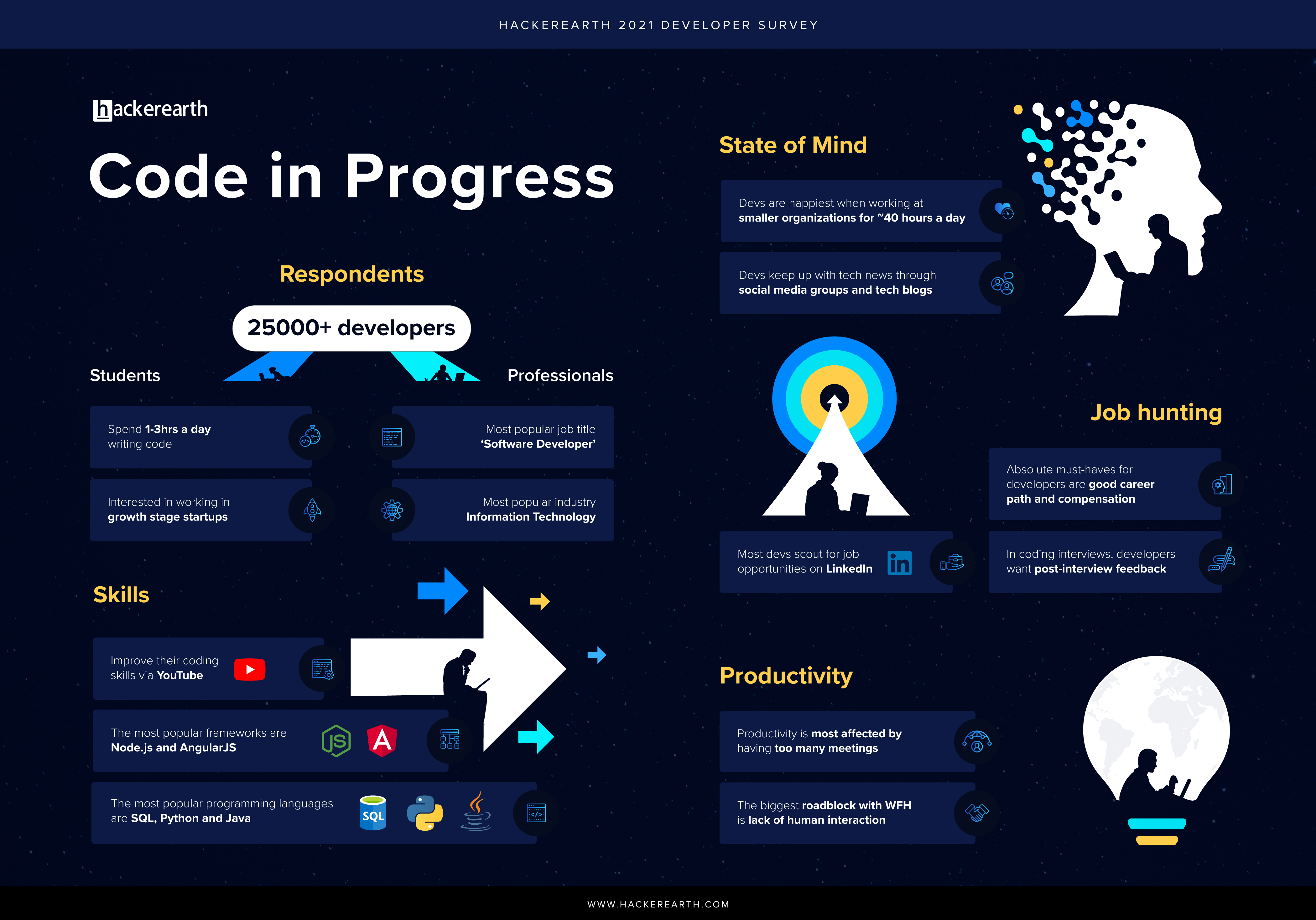HackerEarth has always taken tech hiring to the next level. It offers integrations with the most popular Application Tracking Systems (ATS), the latest being Naukri RMS. The mundane process of tech hiring just got bumped to first class!
RMS has got you covered, right from sourcing, assessing, and interviewing the candidate to sending out the offer letter.
Our integration with RMS allows a recruiter to conduct coding assessments on the HackerEarth Assessments platform without leaving the ATS that they are using to track applicants. All your assessment data from HackerEarth will be automatically synced to the ATS in real-time.
If you add or modify any data on the HackerEarth platform, the same data will be updated on RMS, your ATS platform. Your workflow is not disrupted and you do not have to do it manually, anymore.
This eliminates a lot of the back and forth, saving you time in the process.
If you have already been using RMS as your ATS partner, you will now be able to assess candidates for over 80+ skills, 40+ coding languages and 10+ developer roles with HackerEarth Assessments in RMS. You will also be able to:
Do you want to see other ATS platforms that HackerEarth integrates with? This is where you can find it on our main website.
Allow us to streamline your tech recruitment. Sign up for a 14-day free trial today.
What is Naukri RMS?
Naukri RMS is a simple and easy-to-use applicant tracking software that automates end-to-end hiring. Power up your tech hiring process by quickly and effortlessly hiring the best tech talent without ever leaving your ATS.Naukri RMS Key Features
- Extensive resume database: Access a vast pool of resumes to find qualified candidates quickly.
- Simplified job posting: Create and publish job postings effortlessly across multiple channels.
- Automated workflows: Streamline repetitive tasks like email notifications, candidate scheduling, and status updates.
- Customizable recruitment pipelines: Tailor your hiring process to fit your company's specific needs.
- Collaboration tools: Foster teamwork and communication among hiring teams.
- Data-driven insights: Gain valuable insights through detailed analytics and reporting.
- Integration capabilities: Seamlessly connect with other recruitment tools and platforms.
- Enhanced candidate engagement: Improve candidate experience through timely communication and personalized interactions.
- Mobile accessibility: Manage your recruitment process on the go.
How can HackerEarth's integration with Naukri RMS benefit you?

RMS has got you covered, right from sourcing, assessing, and interviewing the candidate to sending out the offer letter.
Our integration with RMS allows a recruiter to conduct coding assessments on the HackerEarth Assessments platform without leaving the ATS that they are using to track applicants. All your assessment data from HackerEarth will be automatically synced to the ATS in real-time.
If you add or modify any data on the HackerEarth platform, the same data will be updated on RMS, your ATS platform. Your workflow is not disrupted and you do not have to do it manually, anymore.
This eliminates a lot of the back and forth, saving you time in the process.
If you have already been using RMS as your ATS partner, you will now be able to assess candidates for over 80+ skills, 40+ coding languages and 10+ developer roles with HackerEarth Assessments in RMS. You will also be able to:
- Transfer data quickly between their recruiting system and the HackerEarth platform automatically — ensuring data accuracy and synchronization
- Once you create the required job posting on RMS, you can create and launch coding tests for the candidates; from your ATS itself
- These assessments can be customized according to role-based, skills-based, experience-based categories and so on. You can invite an applicant, right from your ATS platform, to take the assessment. No switching between applications is required
- Collaborate seamlessly with hiring managers and candidates by managing communication from a centralized mailbox in RMS
- RMS also helps in availing detailed candidate performance reports from start to finish
Do you want to see other ATS platforms that HackerEarth integrates with? This is where you can find it on our main website.
Allow us to streamline your tech recruitment. Sign up for a 14-day free trial today.






 Hide personal details with aliases[/caption]
Hide personal details with aliases[/caption]















































